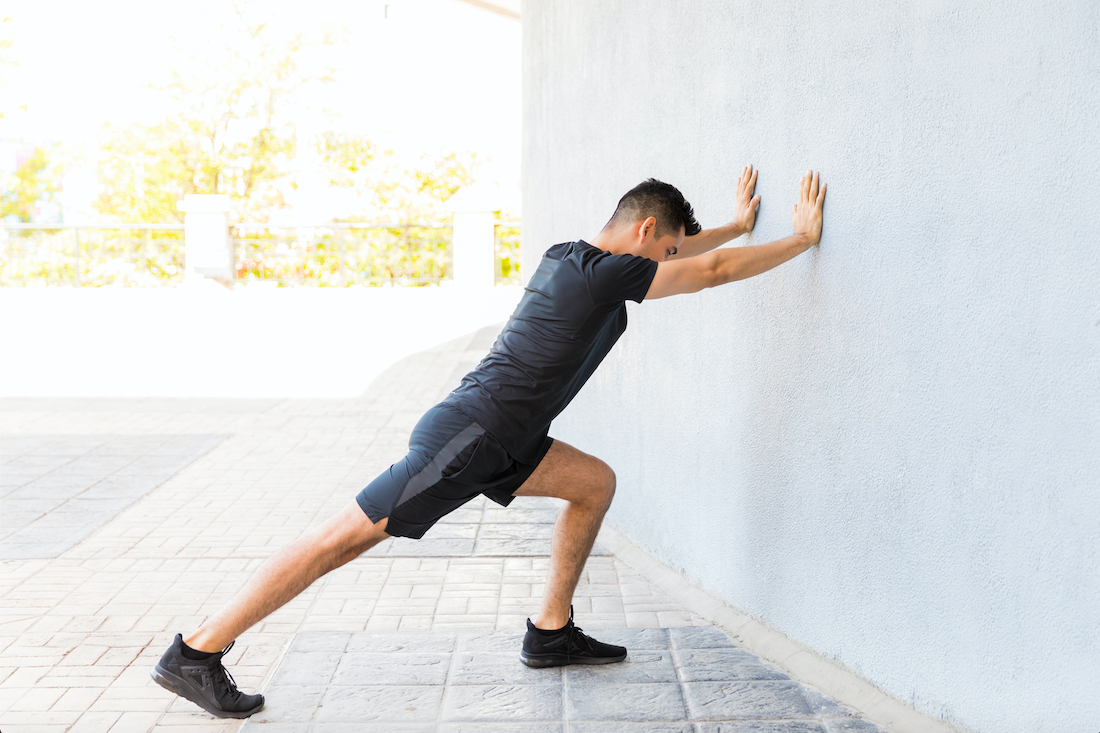News
Three Key Stretches to Address Your Lower Extremity Pain

Lower extremity issues like shin splints, Achilles tendinitis, and plantar fasciitis are fairly common, particularly in individuals who are physically active. The gradual development of pain and resulting physical limitations often take a toll on these patients, only minimally at first, and then significantly over time. Eventually, painful symptoms have the potential to slow down or completely stop an individual from participating in their exercise or activity of choice, which can lead to further physical and mental repercussions.
One of the most effective ways to address musculoskeletal pain is by systematically stretching the structures involved, and that principle applies to each of these conditions. Shin splints, Achilles tendinitis, and plantar fasciitis are all overuse injuries that stem from overtraining without taking sufficient time to recover, and muscle tightness or stiffness is a common feature that can also exacerbate painful symptoms. Therefore, regularly lengthening certain muscles with targeted stretches can cause them to function more efficiently and reduce the strain on painful tendons and muscles. Strengthening and balance exercises can also help. With this in mind, we present three of the best stretches and exercises that you can perform independently to reduce pain from these common lower extremity conditions:
Gastrocnemius/soleus stretch
- The gastrocnemius is the big, bulky muscle of the calf that spans from the lower end of the thighbone (femur) to the back of the heel, where it connects to the foot through the Achilles tendon; it allows you to push your foot downwards—which is called plantar flexion—and helps you bend your knee
- The soleus is a long, flat muscle that lies behind the gastrocnemius, along the back of the shinbone (tibia); it also helps to plantar flex the foot—especially when the knee is bent and the gastrocnemius is being used—and helps to keep the body upright when standing.
- The stretch: this is a two-part stretch, with each part stretching one of the two main calf muscles, and it can be used to address pain from all three conditions.
- Gastrocnemius stretch: lean on a wall or chair and place the leg being stretched behind you, pointing forward and kept straight; next, tighten your thigh muscles and gradually lean forward by bending your elbows, with the heel of your foot always touching the ground; just before your heel lifts from the ground, stop and hold the stretch for 10 seconds; repeat three times.
- Soleus stretch: position your body as you did for the gastrocnemius stretch, but bend your back leg at the knee instead of keeping it straight; move your hips further from the wall and drive your back knee toward the ground while keeping your heel on the ground; just before your heel lifts up, stop and hold the stretch for 10 seconds, try to allow your lower calf muscles to relax during the stretch; repeat three times.
Single leg stance progression exercises
- Balance is incredibly important for athletes and active individuals, and having poor balance can be a contributing factor to many overuse injuries; in essence, if you can’t comfortably stand on one leg—which is called static single-leg stability—the structures of your lower leg will be less capable of handling the normal demands of activity, and this can result in pain.
- Therefore, increasing your single leg balance can help alleviate pain from various lower extremity issues, especially shin splints.
- The exercise: stand upright with your feet together and position yourself behind a chair or next to something stable like a countertop; hold onto the back of the chair with both hands, then slowly lift one leg off the ground and don’t allow your legs to touch; maintain your balance while standing on one leg for 5 seconds, then return to the starting position and repeat 5 times; try to gradually increase the amount of time you spend standing on one leg.
- Variations: as you increase the duration of this exercise and become more comfortable, you can introduce variations like performing the exercise with your eyes closed, raising your heel, or catching and tossing a ball thrown by someone else.
Plantar fascia stretch
- Tight muscles in your calves or feet can exacerbate plantar fasciitis, and the resulting pain can lead to reduced physical activity, which further contributes to muscle stiffness; therefore, stretching the plantar fascia and surrounding structures is one of the most effective ways to alleviate pain from plantar fasciitis
- The stretch: while seated, cross your painful foot over your thigh and let it hang; place your fingers along the base of the toes, then gently bend your foot back into extension, stretching the plantar fascia; hold the stretch for 10–15 seconds, then release; repeat five times.
In our next post, we’ll explain why it’s usually best to see a physical therapist if you continue to be bothered by lower leg pain even after trying these exercises.
Disclaimer:
The information in the articles, posts, and newsfeed is intended for informational and educational purposes only and in no way should be taken to be the provision or practice of physical therapy, medical, or professional healthcare advice or services. The information should not be considered complete or exhaustive and should not be used for diagnostic or treatment purposes without first consulting with your physical therapist, occupational therapist, physician or other healthcare provider. The owners of this website accept no responsibility for the misuse of information contained within this website.
 MOMENTUM FITNESS
MOMENTUM FITNESS